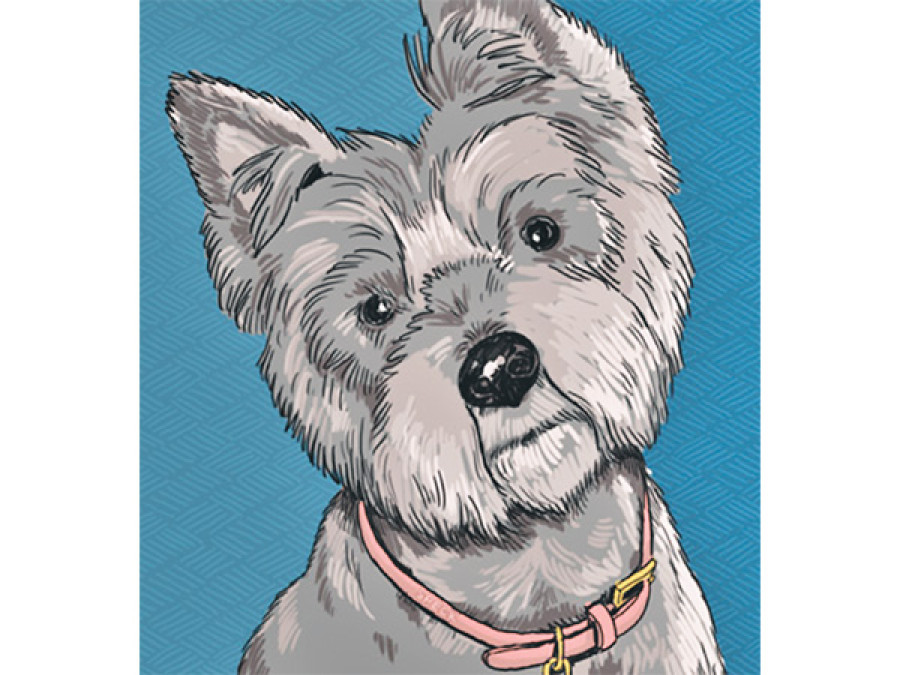Opinion
Inside of a dog
Dogs adapt to human social cues and integrate it in their behaviour
Maneka Sanjay Gandhi
Dogs are close to humans in behaviour as puppies and human children lived in the same social environment thousands of years ago, unlike their own closer relatives—apes and wolves. Consequently, dogs and humans share behaviour that was previously regarded as only human.
For example, the principle of ‘survival of the fittest’ made way for the ‘survival of the smartest’ a long time back. But it has not happened with even the most sentient and human-like animal, the elephant. They have no idea of how to survive the loss of habitat or being poached. Nor do the great apes.
Stray dogs
But in the case of dogs, it is different. A 30-year study done in Moscow city, by biologist Andrei Poyarkov, of stray dogs throws light on their behaviour. These strays are not lost or abandoned animals that have grouped together—they grew up on the streets and have been on their own for generations now. In fact a newly abandoned tame canine will probably be killed by them. These street dogs do not have a distinct colouring any more, no spots and stripes, no wagging tails and they are not friendly like domestic dogs. But they are not in the least like wolves.
To survive is tough and only three percent ever breed. This strong selective pressure has led them to evolve into distinct behavioural types. There are guard dogs that follow security personnel, treating them as the alpha leaders of their packs. They sit next to them at their stations and are fed by them. Others, are called scavengers, roam the city for garbage, instead of interacting with people, and they hunt whatever they can find. The last, are the beggars, the most impressive and the smartest. They have their own beats and recognise their benefactors. They are best known as ‘metro dogs’. They rely on scraps of food from the daily commuters who use the public transportation system. To do so, the dogs have even learned to navigate the subway. Beggars are rarely hit by cars, as they have learned to cross the streets when people do. They wait for a green light even when no pedestrians are crossing which means they have learned to recognise the green walking-man signal. They do not defecate in areas where humans walk. Neither these dogs need brute strength to survive, nor are they like the domestic ones that need to pander to human beings. These are an original, smart, third sub species altogether, that live and adapt with human beings. Since dogs have changed so much in 10,000 years it is hard to imagine what they will be like in another couple of thousand.
Genes and behaviour
Dogs play an astonishing range of roles in human society. Rescue dogs, fishing dogs, guide dogs for the disabled, drug dogs, de-mining dogs, police dogs, termite- and even cancer-detecting dogs, herding dogs, hunting dogs, sled dogs, film actor dogs. All these are now so important to the human society. And this is apart from the pleasure and good health that keeping an individual dog brings you.
To one extent they have evolved so fast because of their genes. Phylogeny or evolutionary history of genes may set the limits of what is possible in behaviour, but it is ontogeny—the personal history of reinforcement—that determines what an animal actually does. During domestication, traits that were often selected by humans, such as lack of aggression and fearlessness towards people, may have carried down along with other genetic traits that lead to a heightened responsiveness to human social stimuli. But the dog’s individual environmental history plays a major role in shaping its behaviour. A domestic dog from puppyhood is completely dependent on human caretakers for all of its needs like a human baby. But children grow into independent beings and dogs are dependent for food, water among others throughout their lifetimes. And that is why they are dependent on their appropriate behavioural responses to humans. Dependency is rewarded : a puppy that sits by its bowl and whines for food will get a better response than one who seeks out a source of food on its own, such as from a closet or off a table. Similarly, a dog that goes to the door and barks when it has to relieve itself will be praised rather than one that urinates in the house. So a dog quickly recognises overt and subtle human gestures, and passes them on to the next generation, and that shapes its evolution. Five gestures were used in a study: pointing, bowing (bending the upper torso), nodding, head-turning, and glancing with the eyes only. The dogs understood all. The use of gestures could have shaped other species through this process over time but dogs appear to demonstrate sensitivity for human gestures that many other nonhuman species, like cats for instance, lack. Interestingly, the successful dogs in these studies had only had minimal contact with humans.
Intelligent species
The rapidity with which individual dogs adapt to human social cues, and integrate new behaviour into their repertoire, shows not only attentiveness to human action but also understanding of the context within a human environment. This requires intelligence. Imagine a human baby having to live with a pack of dogs and quickly understanding what they did and why they did it.
Moreover, dogs are quiet smart. For example, in conditions where taking a piece of food has been forbidden, domestic dogs will wait if the human is watching but are much more likely to take the food if the human does not have a direct view of the food. In another experiment, dogs were given the opportunity to approach and beg from one of two women holding sandwiches. One of the women was blindfolded. Dogs were given a piece of food no matter whom they begged from. But the dogs begged significantly more from the sighted individual than from the other woman. According to a 2004 report published in Science magazine, a dog named Rico recognised vocal labels for over 200 items which he retrieved by name. The study demonstrated that Rico was able to identify a different item from a group of familiar items and it would retrieve the different item in response to an unfamiliar item name. Rico was credited with not only pairing an unfamiliar name with an item but remembering the new name of that item in later testing sessions. The study with Rico raises interesting questions about the capacity dogs have for learning.
To join the animal welfare movement contact [email protected], www.peopleforanimalsindia.org




 18.12°C Kathmandu
18.12°C Kathmandu










